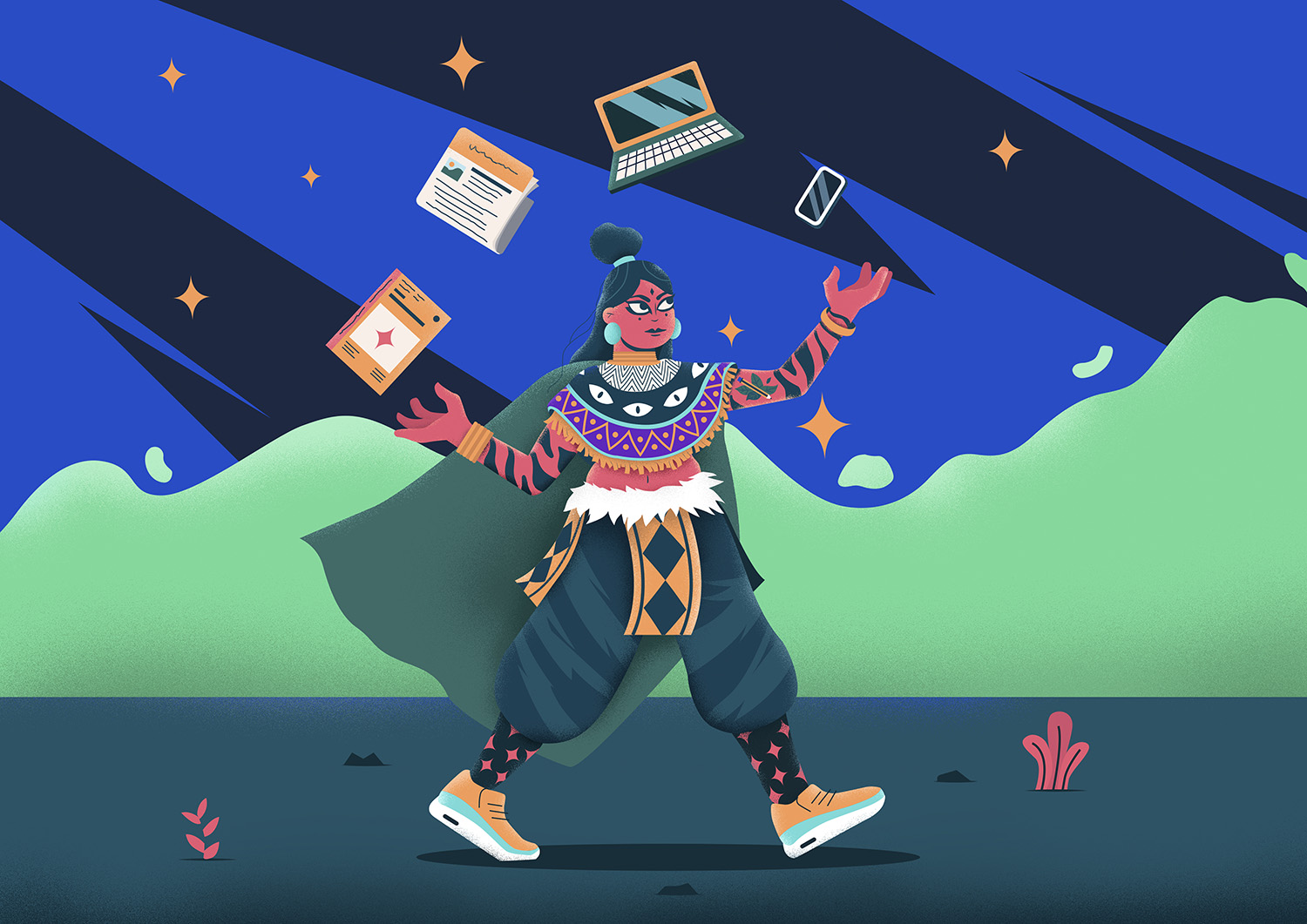Editorial Illustration Pricing for Magazines: A Complete Pricing Guide
Illustrate Now
Editorial illustrations are more than decoration—they bring stories to life, capture emotion, and spark curiosity. Whether you’re an illustrator setting fair rates or an editor planning a commission, understanding editorial illustration pricing for magazines is critical.
In this guide, you’ll find real-world pricing examples, industry-standard practices, licensing insights, and lived experiences from professionals. Let’s dive in.
Table of Contents
ToggleWhat Is Editorial Illustration?
Editorial illustration is artwork created for magazines, newspapers, and digital publications to visually enhance storytelling. These illustrations can:
- Capture mood
- Offer metaphoric interpretation
- Engage readers visually
Common formats include:
- Spot illustrations (small symbols or visuals)
- Half-page visuals
- Full-page features
- Cover art
Illustrator Insight: Why Pricing Varies So Much
“When I started out, I didn’t realize that what you charge isn’t just for your time—it’s for how much value the publication gets from your work. Learning how usage rights affect pricing was a huge shift.”
— A. Michaels, freelance editorial illustrator (NYC)
Factors Influencing Editorial Illustration Pricing
Editorial illustration pricing for magazines is not one-size-fits-all. Several variables impact what illustrators charge—and what magazines are willing to pay.
1. Illustration Size and Placement
- Spot: $150–$500
- Half-page: $400–$900
- Full-page: $800–$1,500
- Cover: $1,500–$4,000+
Placement matters. Cover art usually requires the most creative input and visibility, hence the higher rate.
2. Artist Experience and Style
Seasoned illustrators with a recognizable style or high-profile clients charge more. Emerging artists may accept lower rates initially to build portfolios.
Tip: Don’t undersell your work—track how long pieces take and what rights you’re giving up.
3. Licensing and Usage Rights
What rights the publication receives affects pricing significantly:
- First rights: One-time use; artist retains ownership.
- Exclusive rights: Higher rate; limits the artist from reselling.
- Buyout: Publication owns the image entirely—should be priced at a premium.
You may also encounter territorial rights (e.g., North American rights only), which offer partial exclusivity and affect pricing accordingly.
4. Deadline Pressure
Rush jobs often include a 25–100% surcharge because the artist must reprioritize existing commitments.
“Fast, cheap, or good—pick two.”
— Common industry saying
5. Creative Direction and Revision Cycles
The more feedback rounds and tight art direction, the more time the job consumes. That time should be reflected in your rate.
Typical Editorial Illustration Pricing Ranges
Here’s a practical breakdown of common pricing tiers:
| Illustration Type | Range (USD) | Includes |
|---|---|---|
| Spot | $150 – $500 | 1–2 revision rounds, 1st rights |
| Half-page | $400 – $900 | 1–3 concepts, minor revisions |
| Full-page | $800 – $1,500 | Concept sketches + 2-3 revisions |
| Cover | $1,500 – $4,000+ | Premium concepting + full rights |
Rates from the Graphic Artists Guild’s Pricing & Ethical Guidelines and industry sources like Working Not Working.
Real-World Scenarios
1. Indie Art Magazine (Spot)
- Fee: $200
- Usage: One-time print only
- Timeline: 2 weeks
- Illustrator: New grad with a strong personal style
2. Regional Lifestyle Magazine (Half-Page)
- Fee: $700
- Usage: Print + digital
- Timeline: 10 days
- Illustrator: Mid-career, previous magazine credits
3. National Cover Feature
- Fee: $3,200
- Usage: Print, digital, exclusive for 1 year
- Timeline: 3 weeks
- Illustrator: High-profile, works with The New Yorker
Editorial Illustration Licensing Explained
Usage rights can make or break the deal. Here’s what to know:
| License Type | Description | Impact on Pricing |
|---|---|---|
| First Rights | One-time use; artist retains ownership | Base pricing |
| Exclusive Rights | Magazine uses it exclusively for X time | +25–50% surcharge |
| Buyout | Magazine owns it forever | +100–200% premium |
Tip: The artist should always retain moral rights, even in a buyout.
How Magazines Budget for Illustrations
- Legacy Print Magazines (Condé Nast, The New Yorker): High-end budgets with formal contracts.
- Mid-size or Regional Titles: Moderate rates, sometimes negotiable.
- Indie/Digital-Only: Smaller budgets, often flexible, but may have exposure-based trade-offs.
Deadlines and editorial calendars often dictate payment cycles (Net-30 or Net-60 terms).
Tips for Navigating Pricing and Negotiation
For Illustrators:
- Clarify usage and scope before quoting.
- Always get a written agreement or contract.
- Have a kill fee policy (in case the project is canceled).
- Avoid spec work unless it’s for a pitch you initiated.
For Editors/Art Directors:
- Be upfront with budget and expectations.
- Respect time with clear briefs and deadlines.
- Allow creative freedom within brand guidelines.
“When I worked as an art director for a regional mag, we avoided endless revision rounds by giving illustrators clear briefs with examples upfront.”
— K. Lopez, former art director at SouthCoast Living
Where to Find Editorial Illustration Opportunities
For Illustrators Seeking Work:
- Cold-pitch to magazine art directors.
- Use LinkedIn and portfolio sites.
- Join illustrator directories and Slack communities.
Final Thoughts: Value What You Create
Understanding editorial illustration pricing for magazines empowers both illustrators and editors to collaborate fairly and creatively. A great illustration adds meaning, emotion, and impact—its value goes beyond the canvas.
FAQs
1. What’s a fair rate for a magazine spot illustration?
A fair spot rate typically ranges from $150–$500, depending on experience, complexity, and usage rights.
2. Do illustrators get royalties?
Usually no—editorial work is a one-time fee model, unless otherwise negotiated for reprints or merchandise.
3. Can I reuse editorial illustrations in my shop or portfolio?
If you retain the rights (most common unless it’s a buyout), yes. Always check the contract.
4. How should I handle a lowball offer?
Politely explain your rate, based on time, licensing, and industry standards. It’s okay to walk away.
5. Where can I find standard contract templates?
Professional organizations like the Graphic Artists Guild and AOI (Association of Illustrators) offer vetted templates.







